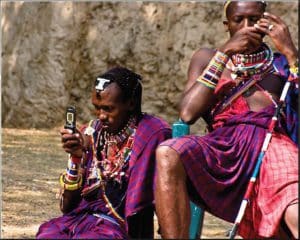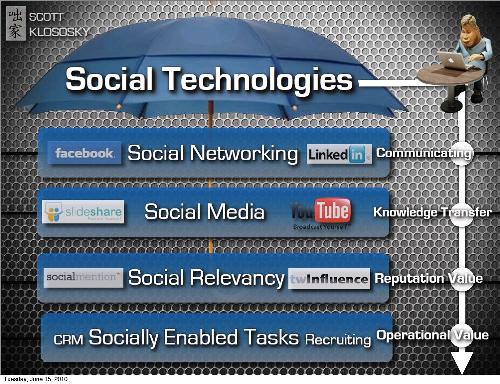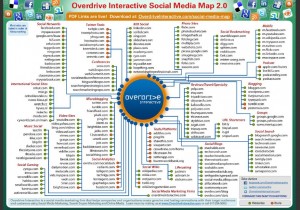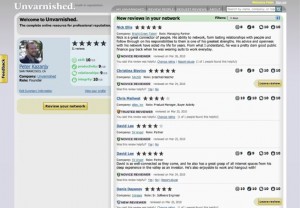A Blueprint For Socially Augmented Events: The Seven Stages Recap
On June 15, at the PCMA Education Conference 2010, I saw Scott Klososky present how to use social technologies in the seven stages of event planning. The title of his presentation was “A Blueprint For Socially Augmented Events.”
Scott’s presentation was mind boggling, thought-provoking and progressive. He laid it all on the line and challenged meeting professionals everywhere to get involved with social technologies in all aspects of the event planning and implementation or risk becoming stale, outdated and obsolete. In his own words, “Stop saying your attendee’s don’t use social media. They do!”

Image from Scott Klososky’s presentation. He emphasized to stop saying “My attendees are not using social media!”
Here are my notes from Scott Klososky’s presentation.
Why People Attend Conferences & Use Social Technology
Most people attend conferences and events for two critical reasons:
- Networking and
- Information flow (education)
Amazingly, these are the same two reasons social technology is important.
Some Social Definitions For Clarity
Social Technology is an umbrella term encompassing all things social.
- Social Relevancy is your online credentials, your reputation and value. (Socialmention, twinfluence)
- Social Media is online media transfer. (Slideshare, YouTube)
- Social Networking is online networking. (Facebook, LinkedIn)
- Social Enabled Tech is your online operational value. (CRM, Recruiting)
The Social Stuff We Should Care About For Our Events
Download your own version of the above chart.
The Social Technology Concepts Event Organizers Need To Address
- Organizational Voice (blog, Twitter, Facebook)
- eWord of Mouth
- Real Time Collaboration
- Online Reputation Management
- Rivers Of Information
- Location Based Marketing
- Crowdsourcing
Seven Stages Of Socially Augmented Events
Conference and meeting organizers must think about adding more value to their face-to-face events. Many attendees can get free content online. The face-to-face experience must be immersive, inclusive and provide a unique experience along with additional value than just reading the content online after the event
Social technology provides a way for event organizers to use inexpensive, if not free, tools that can be integrated into all aspects of the event, create a standard to follow, allow for comprehensive data tracking and are portable.
1. Pre-Event Marketing (at least three to six months out from event)
- Viral videos (Example: create a YouTube event channel, not just a YouTube organizational profile)
- Collaboration Site where all team and association volunteers can collaborate together in real time. (Google Wave, Basecamp)
- Event (organization) Voice (Use social media tools to start talking about the event. Don’t make all communication purchase driven only. Share content, resources and helpful information. Also, add human element to event org profile. Show pictures of those sharing the information on background profiles. Use initials of those sharing information so that readers know who posted the information.
- Leverage Speaker Content – (videos, white papers, blogs, twitter streams). Scott asked, “Why do meeting professionals hire speakers, pay them a lot of money and have them only fly in to speak and then fly out? That’s a disservice to the attendees. Ask and expect speakers to provide more before, during and after the event.”
- Create eWOM campaigns
- Crowdsourcing (crowdsource topics, issues, authors for book chats, etc.)
2. Pre-Event Networking (start at least three months before the event, not two to three weeks!)
- Secure an eCommunity Platform (use one that has an itinerary module, allow people to schedule private meetings with others-especially exhibitors and sponsors, open it early and begin seeding it with content from speakers and the event)
- Create a custom iPhone/Android app (can be done very inexpensively these days.)
- Make sure your eCommunity Platform has calendering connected to attendee list
- Seed Speaker Interaction
- Invite attendee questions and requests early (Uservoice.com for crowdsourcing event ideas)
3. Sponsor Support
- Electronic Coupons – Distribute electronic sponsor coupons to event attendees (twtQpon)
- iPhone/Android App
- Collaboration technology
- Provide social contact
- Access to eCommunity calendering
- Foursquare integration
4. Event Networking
- Connect with presenters (text or Twitter Q & A during presentations)
- Location based marketing and gaming for events, tradeshow floor, city venues (Foursquare, Gowalla)
- Community contributed reviews for business professionals (GetUnvarnished.com It’s like LinkedIn meets Yelp meets Wikipedia This is really cool!)
- Publish social addresses
- Public or private micro-networking (Yammer example of private site, Twitter, public )
- Aggregation of all event-related feeds (Almost.at – real time page aggregating everything related to conference, Paper.li is a recap of some tweets using a specific hashtag–not all– from past 24 hours–reads like a show daily)
5. Presentation Delivery
- Skype in experts and speakers
- Text message Q&A with speakers (can be done with iPads now!)
- Hybrid events with simultaneous delivery from face-to-face event
- TED model (10 minute presentations video recorded and released throughout the year after the event)
- Second Life is making a resurrgence
6. Content Distribution
- Post to YouTube Channel (not organization page, create a YouTube Channel!)
- Post to SlideShare Channel
- Scribd & Flickr
- iPhone/Android app requests
- Create link library for distribution for six months or longer (the 360 day or perpetual conference)
7. Post Event Follow Up
- Measurements & analytics
- Complete social connections
- 180 Day River Of Information to include links to channels, abbreviated videos, links to speaker content
Listen to Scott Klososky’s full presentation. For a copy of his slide deck, (which is totally awesomesauce), contact Lori McKanna, tell her you read about Scott’s presentation on this blog and ask her to send you a link to Scott’s slide deck. It’s a large document you will be sent a YouSendIt link to download from the Internet.
What’s missing from Scott’s use of social technologies for events? What concerns you most about this list? What excites you?






It all is very exciting to me. Just not sure event managers are ready. They need to see working models from existing events. Proven techniques
I’m trying to extract case studies of how these different pieces are getting used at existing events like SXSW, etc.
Good stuff, love whats coming out of Midcourse Corrections, you guys are definitely forward thinking.
[…] This post was mentioned on Twitter by Jessica Levin and The MeCo SN Team , Seven Degrees. Seven Degrees said: RT @Jeffhurt: A Blueprint For Socially Augmented Events: The Seven Stages Recap from @sklososky preso #pcmaec #eventprofs http://ow.ly/1ZSaJ […]
Hi Jeff,
This is such a fabulous resource! I’m currently working with a committee planning exactly these aspects of the conference, so your blog post will become a valued resource. Thanks for sharing ideas of using GetUnvarnished and also aggregating feeds into one spot – good ones to know about.
Two post-event things that I might suggest (which I’ve done when I present):
– ask presenters to upload reference links to their presentations and all referenced materials within the presentation to delicious with the EVENT tag and a subtag of their exact presentation.
– ask presenters to upload presentations to an EVENT on slideshare
– create a wiki to continue the conversation and learning long after the event.
What do you think? Other ideas?
‘@Kin
So true that people often need to see working models in order to make connections and recognize the opportunities. Thanks for adding that point.
@Debra
Great additions and love the point about uploading referenced links from presos with Event tag and subtags. I also like the idea of a wiki to continue the conversation long after the event. Thanks for adding more ideas!
[…] This post was mentioned on Twitter by . said: […]
[…] Jeff Hurt gives you “A Blueprint for Socially Augmented Events: The Seven Stages Recap” at Midcourse Corrections: http://velvetchainsaw.com/2010/06/17/blueprint-for-socially-augmented-events-seven-stages-recap/ […]
[…] EduCon introduced a blueprint for a social augmented event. There are seven stages to that blueprint, and currently CrowdVine currently dominates two of them, […]
[…] Scott Klososky (via Jeff Hurst) refers to this concept as having seven stages, including pre-event marketing and networking, sponsorshop support, event networking at the event, presentation delivery, content distribution and post event followup. […]